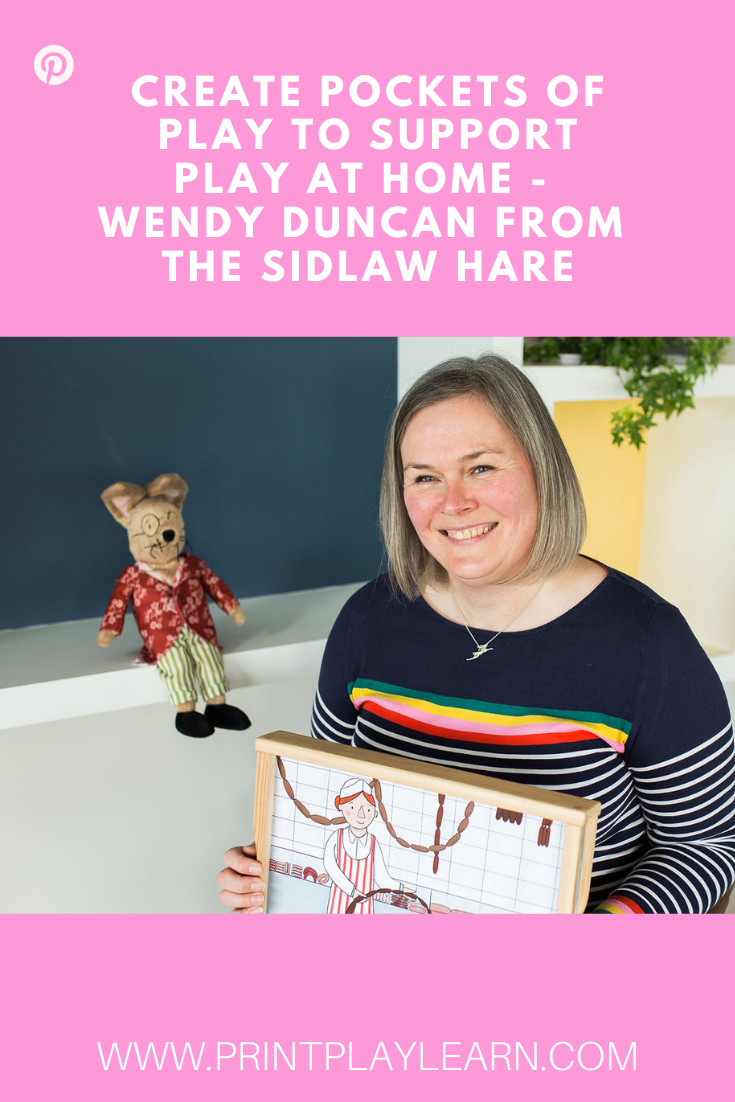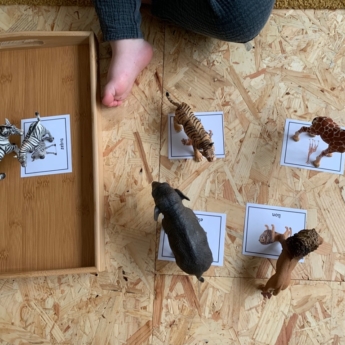Pockets of Play
I was recently interviewed for the Home Education Hub. During my interview, I came up with the phrase ‘Pockets of Play’ to describe setting up small areas of easily accessible play around the house.
Setting Up
Setting up pockets of play around the home helps to mix up the play experience. I’m not suggesting turning every room into a play room. You could have a small box or basket with a few pieces inside for your child to access. Keep the choice limited and provide baskets, boxes or bags to store everything which will help to encourage keeping things tidy. Set up a selection of play opportunities for your child to use all around the house and outside if you have access to a garden. Encouraging your child to access these play opportunities independently will help them to develop their independent play skills.
Independent Play
Independent play is a valuable skill for both you and your child. Try to keep an eye out to see which areas are used most. Keep the most popular ones available and change up the less popular ones. You will know when they become bored or are no longer interested. Repetition is great for children so don’t be worried if they are playing with the same set up everyday. You can always make small changes to introduce new types of toys or experiences to the favourites.
Having pockets of play available can help with stressful times during the day. Setting things up the night before can help create a calmer atmosphere in the morning. Knowing there are special play experiences available can help keep little ones busy while you prepare breakfast or get an older sibling ready for nursery or school.
Calm Transitions
Transition can often be a difficult time for children especially if changes are happening in their lives. Starting school, moving house or becoming a big brother or sister can cause children to feel unsettled during regular parts of their day. For example, some children find the transition of changing from indoor play to outdoor play quite challenging. Allowing children to take toys from inside to the outdoor space can help with this transition. Having pockets of play and lots of loose parts available can also help children to seek out a familiar scenario. Children get comfort from revisiting play they enjoy, so if they are engaged in the play be sure to make it available to them all the time.
People to Follow
Bex, a SAHM and yarn wizard from the Pigeons Nest sets up an after school snack with an activity (snacktivity) before she goes to school to collect her eldest son who started school this September. Her son was struggling with the transition from school to home. Bex started to set up their snack, ready to eat as soon as they got home with a table top activity before she set off on the school run. Bex also created a visual timetable which she displayed at the door so it was visible immediately. The visual timetable help to reinforce the sequence they followed when they got home. Hanging up coats and washing hands are on the visual timetable.
Preparing snack trays or having an easily accessible snack drawer for older helps autonomy and helps reduce hangry children and adults! You can get compartmentalise trays and boxes which again you can prep the night before or get the ready for the day in the morning. Having these easily to hand can be a lifesaver and helps to avoid the temptation of quick unhealthy snacks. I like the snacks that The Taming Twinsand The Workspace for Children share on their accounts.
Ideas to Try
One of my favourite things about pockets of play is creating reading and play nooks. Children love small spaces. Try to create snug spaces and little nooks for them to retreat to and play. This could be as simple as a sheet over a table or two chairs. In one of my nurseries we took the doors off and shelves out of a cupboard. The children helped to wallpaper the empty cupboard. We put some cushions inside and hung a mosquito net curtain to create a sense of being enclosed. The children loved it. We also used little pop up tents. I heard a little girl who was a selective mute talk for the first time. I think she felt safe and secure in the small enclosed space. It was quite the breakthrough.
So, if you want to encourage more independent play or you have a difficult transitional period in your day try preparing some pockets of play that you can grab when needed or have set our ready for your child to access whenever they need it.
Guest post by Wendy Duncan. Wendy is a Children’s Author and creator of the The Sidlaw Hare, find out more about her books and follow her on Instagram.


